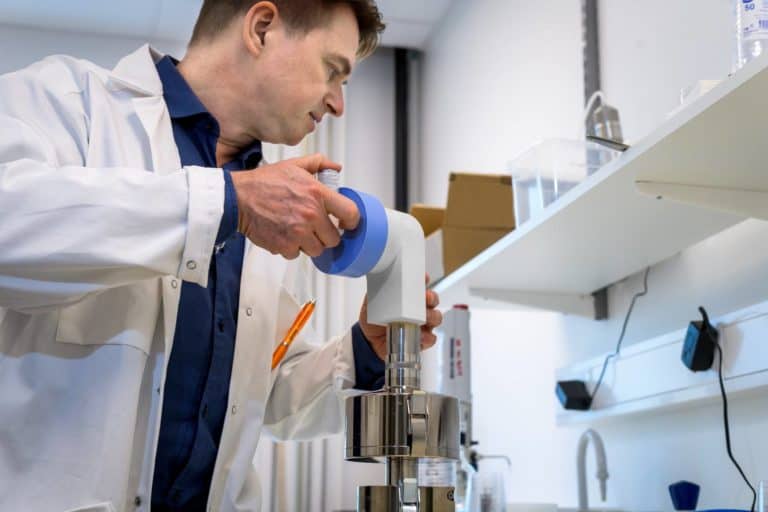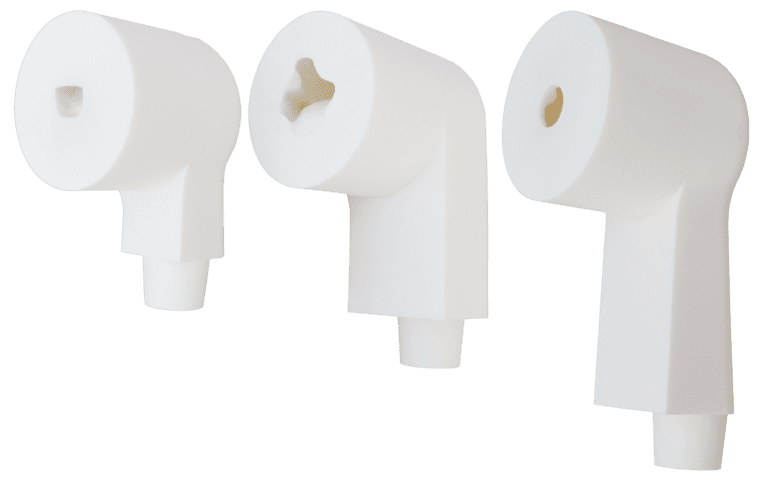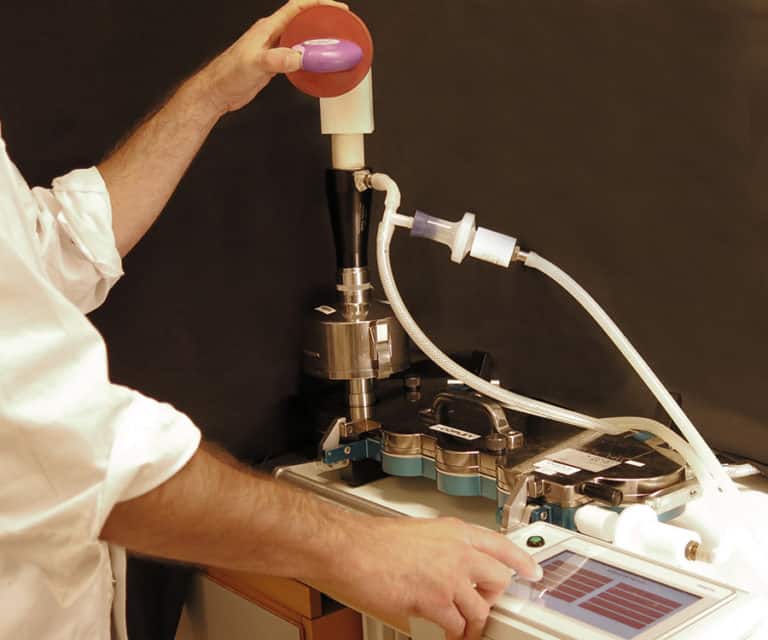Prediction of Lung Dose – In vitro in vivo correlation (IVIVC)
Prediction of Lung dose
Prediction of lung dose from inhaler devices is a key element of inhaler product development. Emmace offers a validated in-vitro methodology for this purpose, based on anatomically realistic mouth-throat models in combination with patient-like inhalation profiles.

In vitro in vivo correlation IVIVC
The general idea behind the concept is to expose the inhaler product to factors that can be expected in real patient use, such as a variety of mouth-throat geometries and inhalation flow profiles. In vitro in vivo correlation (IVIVC) studies based on this concept have demonstrated* that the dose that passes through these throat models at realistic inhalation flow profiles correlates strongly with the lung dose found in clinical lung deposition studies.
Moreover, by analyzing and comparing the aerosol doses that pass through the small and the large throat models, the lung dose variability in an adult population can be estimated. The throat models can be used with cascade impactors, laser diffraction instruments, or particle counters or can be connected to an integral filter downstream of the model. These options allow for customized studies to address all factors that may be necessary for understanding the lung dose from a given inhaler.
*Bo Olsson, Lars Borgström, Hans Lundbäck, and Mårten Svensson. Journal of Aerosol Medicine and Pulmonary Drug Delivery. December 2013, 26(6): 355-369. doi:10.1089/jamp.2012.0986.
The anatomical throat models
The anatomical throat models (small, medium, and large) were developed by a consortium consisting of AstraZeneca, GlaxoSmithKline and Sanofi Aventis. The geometry of the models originates from MRI (Magnetic Resonance Imaging) studies of adult oropharynx regions during inhalation maneuvers. Also, the three models were selected based on their ability to retain or pass particles from different inhalation product types (pMDI, DPI and nebulizer). These throat models are manufactured and sold by Emmace.

Air flow profiles
Air flow profiles through the inhaler devices are generated with a programmable lung simulator (Model F-SIG6300; AB FIA, Lund, Sweden). The inhalation profile is downloaded to the lung simulator as a simple data file, which enables the replay of any kind of profile shape. Before the main testing of products, the relevant profiles are replayed and verified experimentally.
Performing a IVIVC measurement
The simplest measurements can be made by just placing a filter downstream of the throat. A greater understanding of the device itself can be gained by incorporating the methodology plus a cascade impactor. Customized protocols, including a balanced mix of these two approaches, are agreed upon in advance with each client on a case-by-case basis.
Emmaces’ in-vitro methodology in product development
The methodology can be used for:
- Combining the three throat models with a set of clinically relevant flow profiles to give a good prediction of how an inhalation product will behave in a patient situation
- Examining inhaler handling robustness by measuring the effect on lung dose as a function of mouth position angle, distance from tongue position, and other human factors
- Predicting the effect on lung dose from add-on devices to inhalers, such as spacers
- Assisting with the design of clinical studies including selection of dose strength and number of doses
- Devising screening methods for new product development work; ranking different device prototypes or formulation concepts by simply measuring the dose that passes through the models, using a single filter downstream of the throat model
- Comparing new products or prototypes to those of competitors
- Generating science-based marketing information for new inhaler and formulation concepts

The mixing inlet setup; Impactor, OPC anatomical throat model and generation of a patient realistic inhalation flow profile.
See MVIC and Emmace talking about Inhalation product characterisation here

